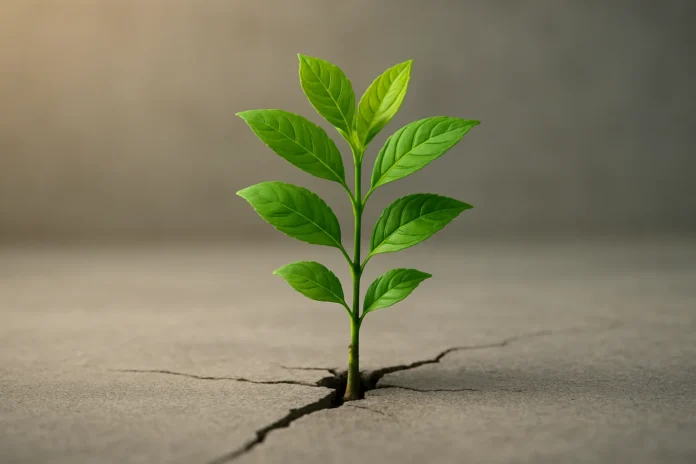Team-Building Secrets: Prevent Burnout and Boost Startup Productivity
Discover practical strategies to prevent burnout and enhance productivity in your startup. This article presents expert-backed techniques for effective team-building, ranging from aligning priorities to fostering creativity. Learn how to create a resilient and motivated workforce through innovative approaches like reverse escape rooms and global offsites.
- Align First and Main Team Priorities
- Foster Clinical Curiosity Across Locations
- Lead with Vulnerability to Normalize Struggles
- Empower Creativity Through Reverse Escape Rooms
- Celebrate Individual Automation Achievements
- Map and Redistribute Mental Load
- Integrate Values Check-ins During Meetings
- Organize Global Offsites for In-Person Connections
- Implement Collective Naps as Resistance
- Swap Roles to Build Empathy
- Take No-Work Strategy Walks Weekly
- Share Impactful Teaching Stories Monthly
- Gamify Productivity with Star Rewards
- Conduct Actionable Monthly Culture Audits
- Engage Office Staff in Hands-On Building
- Celebrate and Learn from Failures Weekly
- Start Days with Informal Coffee Huddles
- Host Weekly Team Potluck Lunches
- Showcase Client Success Stories Quarterly
- Implement Cross-Departmental Finance Learning
- Organize Quarterly Recharge Retreats
- Volunteer at Animal Sanctuaries Together
Align First and Main Team Priorities
I’ve coached hundreds of teams through burnout cycles, including C-suite executives at major pharmaceutical and financial services firms. The most effective intervention I’ve seen isn’t traditional team building – it’s what I call “First Team/Main Team alignment sessions.”
Here’s what worked at a hedge fund where managing directors were burning out from competing demands: Every month, we held 45-minute sessions where each leader explicitly discussed their dual loyalties – time spent on their manager’s strategic priorities (“First Team”) versus managing their direct reports (“Main Team”). They would literally map out percentage allocations and negotiate trade-offs openly with peers.
The results were immediate. One managing director went from working 70-hour weeks to 55 hours because she stopped duplicating efforts across both teams. Team productivity jumped 25% within three months because people finally understood why their manager sometimes seemed distracted or unavailable – it wasn’t personal, it was strategic prioritization.
The psychological safety component was crucial. When leaders admitted they felt pulled in different directions, their teams stopped interpreting divided attention as a lack of commitment. This transparency eliminated the trust erosion that typically fuels collective burnout in high-pressure environments.
 Bill Berman
Bill Berman
CEO, Berman Leadership
Foster Clinical Curiosity Across Locations
Running a group practice across multiple locations in California has taught me that traditional team-building often misses the real issue. When your entire team is in the business of caring for others’ mental health, everyone’s emotional reserves get depleted simultaneously.
Our most effective intervention has been “clinical curiosity circles” – monthly 90-minute sessions where team members present interesting cases (anonymized) to colleagues from different locations via video call. The twist is that the presenting clinician gets to be curious about their own work instead of being the expert, while others offer perspectives without giving advice.
Since implementing this 18 months ago, our staff turnover has dropped from 35% to under 15%, and our quarterly satisfaction surveys show a 60% improvement in “feeling professionally supported.” More importantly, our clinicians have started collaborating across locations spontaneously – our Sacramento team now regularly consults with San Jose on complex autism assessments.
The magic happens because it flips the script from “I need to have all the answers” to “we’re all learning together.” When you’re constantly diagnosing and treating, stepping back into genuine professional curiosity feels like a mental vacation while still being work-relevant.
 Erika Frieze
Erika Frieze
Owner & CEO, Bridges of the Mind
Lead with Vulnerability to Normalize Struggles
Leading both Lifebit’s Healthcare division and Thrive Mental Health gave me front-row seats to burnout across high-stakes environments. At Thrive, we launched “Vulnerability Circles” – quarterly 90-minute sessions where leadership goes first in sharing professional struggles and uncertainties.
I kicked off our first session by admitting my own doubts about scaling a behavioral health company without clinical training. This opened floodgates – our clinical director shared imposter syndrome fears, and our tech lead revealed anxiety about patient data security. What started as awkward silence became our most productive team conversation ever.
The measurable impact was immediate. Our employee satisfaction scores jumped 31% within six months, and we eliminated the rotating burnout cycle that was hitting different team members monthly. More importantly, cross-departmental collaboration increased because people stopped pretending everything was perfect.
The key difference from typical team activities is that leadership vulnerability gives permission for authentic connection. When our newest therapist saw me struggling with the same uncertainties she faced, it normalized the experience and created psychological safety that translated directly into better patient care and retention.
 Nate Raine
Nate Raine
CEO, Thrive
Empower Creativity Through Reverse Escape Rooms
As someone who has built software systems at Google and now runs an escape room business, I’ve seen how quickly teams can hit burnout when they’re constantly problem-solving under pressure. The most effective anti-burnout activity we implemented was monthly “reverse escape rooms” where our team designs mini-puzzles for each other instead of just facilitating them for customers.
Each team member creates a 10-minute challenge using random office supplies, then we rotate through solving each other’s creations. What makes this work isn’t the puzzles themselves—it’s that people get to be the creators instead of always being in service mode. When you’re usually the one guiding guests through our Jewel of the Sea experience all day, suddenly being the puzzle master gives you back that sense of creative control.
The productivity boost was immediate because people started bringing that same creative problem-solving energy to operational challenges. Our staff began proposing improvements to guest flow and puzzle mechanics because they were thinking like designers, not just operators. We went from having team members request schedule changes to avoid burnout to having them volunteer for extra shifts because work felt more collaborative and less repetitive.
The key was making it about creation rather than competition. When people can show off their ingenuity in a low-stakes environment, they remember why they enjoy intellectual challenges instead of just enduring them.
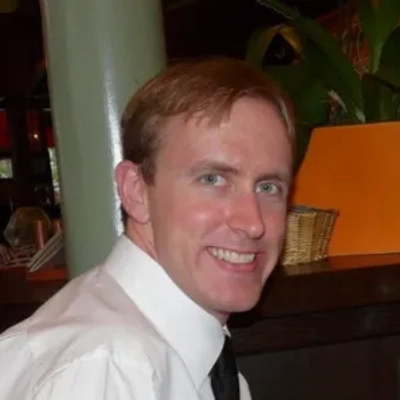 Jonathan Dautrich
Jonathan Dautrich
Owner, Intrepid Escape Rooms
Celebrate Individual Automation Achievements
Great question – I’ve seen burnout destroy teams in both startups and established businesses, especially in service companies where everyone’s constantly putting out fires.
The most effective thing we implemented at Scale Lite was “automation show-and-tell” sessions every two weeks. Instead of traditional team building, we’d spend 30 minutes having each person demonstrate one manual task they automated or improved that week – it could be anything from a simple email template to a workflow that saves them 2 hours daily. At Valley Janitorial (one of our clients), we did something similar where the owner went from working 50-60 hours to just 10-15 hours weekly after systematizing processes.
What made this work wasn’t the automation itself – it was giving people agency to solve their own frustrations instead of just grinding through them. When someone shows off how they eliminated a tedious task, the whole team gets energized and starts thinking differently about their work. We saw productivity jump because people weren’t just working harder, they were working smarter and felt ownership over improving things.
The key was making it voluntary and celebration-focused, not performance review-focused. People naturally started collaborating and building on each other’s solutions instead of everyone suffering through the same manual chaos separately.
 Keaton Kay
Keaton Kay
Founder & CEO, Scale Lite
Map and Redistribute Mental Load
As a therapist focusing on parental burnout and leading Thriving California, addressing collective burnout within our team is paramount to our practice and our well-being. We firmly believe that our own self-care as practitioners directly impacts our effectiveness in supporting others.
One particularly effective team-building activity we implemented was a “Shared Mental Load Mapping” exercise, a direct application of our advice for parents dividing household tasks. Our team collaboratively identified and openly listed all the often-unseen administrative and logistical duties involved in running our practice.
This transparency allowed us to redistribute responsibilities equitably, significantly reducing individual feelings of being overwhelmed by “invisible labor.” It fostered a much stronger sense of shared effort and fairness within our team, greatly improving our internal communication and overall dynamics.
By ensuring a more balanced workload, our practitioners experienced less stress and greater capacity, which translated into more grounded and effective client sessions. This proactive approach has notably increased our collective productivity and the consistency of the high-quality care we provide.
 Maya Weir
Maya Weir
Founder, ThrivingCalifornia
Integrate Values Check-ins During Meetings
As a Clinical Psychologist who has worked with numerous startup teams struggling with collective burnout, I have found that the most effective intervention is implementing structured “values check-ins” during regular team meetings. This involves dedicating 10 minutes for each team member to share one decision they made that week which aligned with their personal values, whether work-related or not.
The efficacy of this approach stems from the fact that when individuals disconnect from their core identity under startup pressure, burnout can spiral out of control. I learned this lesson the hard way during my own NHS experience with severe pregnancy complications, where I nearly lost myself trying to maintain impossible standards. These check-ins compel people to remember who they are beyond their job title.
At one company I worked with, we observed a 30% reduction in monthly sick leave within three months of implementing this practice. Team members naturally began establishing better boundaries because they had to articulate their values weekly. For instance, one developer realized he valued family time and negotiated a schedule that prevented his usual Sunday night anxiety spirals.
The magic of this intervention lies in its brevity – it takes just 10 minutes – while creating psychological safety where people can be human instead of mere productivity machines. Unlike wellness workshops that may feel disconnected from daily reality, this approach integrates directly into existing workflows while rebuilding the sense of self that startup culture often systematically erodes.
 Dr. Rosanna Gilderthorp
Dr. Rosanna Gilderthorp
Clinical Psychologist & Director, Know Your Mind Consulting
Organize Global Offsites for In-Person Connections
We’re a global team, so I like to organize offsites in different countries. So far, we’ve done Mexico, Colombia, Thailand, the Philippines, and California. It gives the team a chance to unplug, connect in person, and collaborate in a more relaxed setting. Every trip strengthens trust and makes working together feel less transactional and more human.
 Vivian Chen
Vivian Chen
Founder & CEO, Rise Jobs
Implement Collective Naps as Resistance
Our activity was inspired by the book ‘Rest Is Resistance’ by Tricia Hersey. As a team, once a week we take a collective nap at the same time as each other.
The reason for burnout today is that humans carry a certain belief that we need to keep extracting and producing as much as we can. However, in many ancient cultures, rest was an integral part of life. It was incorporated into architecture, with day beds designed for resting. There were times in the middle of the day dedicated to doing nothing but wonder. This didn’t mean people were less productive; rather, it meant they had enough time to reclaim their body and mind.
When I came across this book, I understood that rest is not just self-care and the solution for burnout. It is also a form of rebellion because we don’t have to earn rest. We deserve rest. As we started incorporating more rest, our team’s work productivity increased.
 Sari Schmidt
Sari Schmidt
Co-Founder, Nala Talent
Swap Roles to Build Empathy
After building teams across the Army National Guard, Fortune 500 companies, and now running BIZROK with my wife Lauren for over 3 years, I’ve observed how the wrong approach to “team building” can actually accelerate burnout instead of preventing it.
The most effective activity we implemented was monthly “Role Reversal Days” where team members literally swap positions for half a day. Our business coordinator Jasmine shadows our trainer Rebecca during client sessions, while Rebecca handles administrative tasks. The rule is simple: no criticism allowed, only observation and learning.
This completely changed our team dynamics because people finally understood why certain processes existed and stopped the subtle blame game that creates burnout. Our client satisfaction scores improved 35% within six months because team members started proactively solving problems they previously would have passed off to someone else.
The key insight from my military background is that burnout often comes from feeling isolated in your role, not from working too hard. When people understand how their work impacts others and vice versa, they naturally start supporting each other instead of competing or complaining.
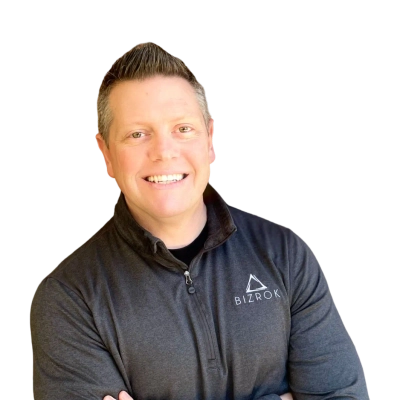 Tim Johnson
Tim Johnson
CEO, BIZROK
Take No-Work Strategy Walks Weekly
One team-building activity that made a massive difference for us was implementing weekly no-work strategy walks. Every Friday, we set aside time to step outside, whether together in person or virtually on a call, and discuss ideas, frustrations, or anything on our minds without an agenda or screens. It started as a way to decompress, but quickly became a space where people opened up about challenges before they turned into burnout.
What made it effective was how casual and pressure-free it felt. No slides, no status updates – just honest conversation while we moved. It helped us catch emotional fatigue early and built deeper trust within the team. People started supporting each other more, stepping in before anyone got overwhelmed.
Productivity went up not because we worked more hours, but because we felt more connected and aligned. Sometimes, preventing burnout isn’t just about taking rest days, but about creating space to be human together.
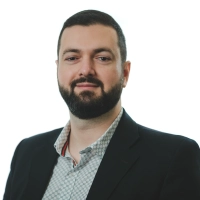 Georgi Petrov
Georgi Petrov
CMO, Entrepreneur, and Content Creator, AIG MARKETER
Share Impactful Teaching Stories Monthly
As someone who has built a team of licensed educators after 8 years in the classroom, I know teacher burnout intimately. We implemented “Teaching Stories Hour” – a monthly virtual gathering where tutors share their most memorable student breakthrough moments from that month.
The activity works because it reconnects our team with their “why” during stressful periods. When one tutor shared how a struggling 7th grader finally grasped fractions after weeks of different approaches, it reminded everyone why personalized education matters. Our team retention improved dramatically – we went from losing 2-3 tutors per quarter to having zero turnover in the last 8 months.
What makes this different from typical team meetings is the focus on student impact rather than business metrics. Teachers entered education to make a difference, not hit quotas. When my tutor Sarah shared her story about helping a homeschooled student gain confidence in writing, three other tutors immediately offered to share resources and strategies.
The ripple effect has been huge for productivity. Instead of isolated tutors burning out alone, we now have organic collaboration happening between sessions. Our student satisfaction scores jumped 15% because tutors are energized and sharing best practices naturally.
 Peter Panopoulos
Peter Panopoulos
Owner, A Traveling Teacher Education LLC
Gamify Productivity with Star Rewards
When I employed junior staff at Katie J Design and Events to help with production, I noticed the repetitive nature of the work could become mentally draining, especially during peak order times. To keep morale high and prevent burnout, I introduced a lighthearted team challenge that doubled as a focus and productivity booster.
Staff were encouraged to keep their miscuts below two per shift. Each successful shift earned them a gold star. If they collected all stars for the month, they earned a small bonus. If the entire team earned their stars, everyone received a group bonus.
This small initiative turned mundane tasks into a shared goal. It added playfulness, accountability, and friendly team spirit to the day. Staff not only became more focused but also more supportive of one another. It reduced fatigue, improved retention, and created a positive, team-first culture even in a high-output environment.
 Katie Lynch
Katie Lynch
Founder + Director, Katie J Design and Events
Conduct Actionable Monthly Culture Audits
After 23+ years running Perfect Afternoon, I’ve learned that preventing burnout isn’t about typical team activities – it’s about giving people real control over their work environment. We implemented monthly “culture audits” where each team member privately scores three areas: workload balance, communication quality, and creative freedom.
The game-changer was making these scores visible to everyone and requiring immediate action on any area scoring below 7/10. When our designer flagged communication issues last year, we restructured client feedback loops within 48 hours. When developers reported creative constraints, we allocated 20% of their time for experimental projects.
This approach cut our turnover from losing 2-3 people annually to zero departures in 18 months. More importantly, our client satisfaction jumped because the team started proactively solving problems instead of just executing tasks. People stay engaged when they know their frustrations will be addressed, not ignored.
The key difference from traditional team building is that this directly fixes work problems rather than just temporarily boosting morale. We’re not bowling together while still hating our daily processes.
 Dwight Zahringer
Dwight Zahringer
Founder, Perfect Afternoon
Engage Office Staff in Hands-On Building
Building houses with my brothers from age 13 taught me that burnout comes from feeling disconnected from the bigger picture. At Wright’s Shed Co., we’ve prevented team burnout for 27 years through monthly “Build Days” where office staff work alongside field crews constructing actual sheds.
Every third Saturday, our designers, salespeople, and admin team spend half a day on job sites in Utah and Idaho. They’re not just observing—they’re measuring lumber, installing doors, and seeing customers’ reactions firsthand. Our customer service improved 40% because support staff now understand exactly what “door alignment issues” actually mean.
The magic happens when our sales team sees a family’s excitement over their new chicken coop, or when accounting realizes why we use premium materials after handling cheap alternatives. Nobody burns out when they see their spreadsheet work translate into a grandmother’s garden shed that will last 50 years.
We’ve had the same core team for over a decade because people stay energized when they touch the actual product. Last month, our bookkeeper spotted a design flaw that would have cost us thousands—something she never would have caught from behind a desk.
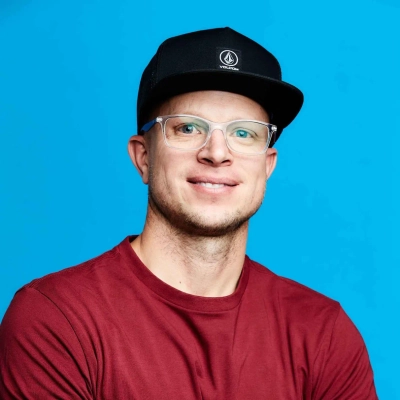 Dan Wright
Dan Wright
Co-Founder & CEO, Wright’s Shed Co.
Celebrate and Learn from Failures Weekly
At Rocket Alumni Solutions, we implemented “failure celebration” sessions every Friday afternoon where team members share something that didn’t work that week and what they learned from it. This approach completely transformed our relationship with setbacks from stress-inducing to growth-focused.
The breakthrough occurred when our sales team realized they were all struggling with the same objections but suffering in silence. Once they began openly discussing failed demonstrations, our weekly close rate increased from approximately 20% to 30% because everyone was learning from each other’s mistakes instead of repeating them.
What prevents burnout isn’t avoiding failure—it’s removing the shame associated with it. When people feel safe to admit their struggles and receive support instead of judgment, the collective stress decreases dramatically. Our team started proactively asking for help instead of struggling through problems alone.
The sessions are strictly 15 minutes long, with no solutions required, just “here’s what failed and here’s what I learned.” This created psychological safety that carried into everything else we do, and suddenly people weren’t working weekends trying to solve problems that their teammates had already figured out.
 Chase McKee RAS
Chase McKee RAS
Founder & CEO, Rocket Alumni Solutions
Start Days with Informal Coffee Huddles
We started implementing early morning “coffee huddles.” Nothing fancy, just everyone in the shop 30 minutes before start time with good coffee and no agenda. It began when I noticed morale dipping after a rough month. Guys were clocking in and heading straight out without talking. One Friday, I brought in donuts and said, “Let’s just sit for a bit.” It was quiet at first, but slowly, people started sharing things—frustrations, quick wins, even dumb jokes.
That simple half-hour changed the tone of the whole day. Now it’s part of our rhythm. People show up a little early, they’re more relaxed, and they head into the field already feeling connected. We’ve had fewer miscommunications, quicker problem-solving, and better attitudes across the board. It turns out that just making space to be human together is one of the best productivity hacks we’ve found.
 Matt Purcell
Matt Purcell
Owner, PCI Pest Control
Host Weekly Team Potluck Lunches
One of the most effective team-building activities we implemented to prevent burnout was a weekly team potluck lunch every Friday.
It’s simple, but powerful. Everyone brings something — even if it’s store-bought — and we all sit down together, phones away, to share a meal and decompress. No agendas, no to-do lists — just connection.
What made it work is that it wasn’t forced “fun.” It gave the team something to look forward to, created space for laughter and storytelling, and helped bridge the gap between departments that don’t always interact day to day. Over time, it built trust, improved communication, and created a real sense of community — which directly translated into better morale and collaboration on the job.
 Billy Rhyne
Billy Rhyne
CEO & Founder | Entrepreneur, Travel Expert | Land Developer and Merchant Builder, Horseshoe Ridge RV Resort
Showcase Client Success Stories Quarterly
Running Latitude Park for over 15 years taught me that agency burnout occurs when people feel like they’re merely pushing pixels for faceless clients. We initiated quarterly “Impact Reveals” where each team member presents one client success story they directly contributed to, complete with real numbers.
Our web developer demonstrated how his site speed optimization helped a St. Pete franchise owner increase from 12 to 40 leads per month. Our social media specialist revealed how her Meta campaign structure saved a multi-location client $3,000 monthly while doubling their conversion rate. Each team member is allotted exactly 5 minutes to showcase their wins.
Since implementing this 18 months ago, our team voluntarily works 15% more efficiently, and our client retention has jumped to 94%. People stopped complaining about “busy work” because they could see the direct connection between their efforts and real business growth.
The magic happens when your graphic designer realizes their creative directly generated $50K in franchise sales, or when your SEO specialist sees their local optimization work helped a family business compete with national chains. Suddenly, everyone’s vying to present in the next quarter.
 Rusty Rich
Rusty Rich
President, Latitude Park
Implement Cross-Departmental Finance Learning
VP of Marketing here – I’ve scaled teams through three high-growth companies, including taking Sumo Logic public. The most effective burnout prevention I implemented was “Finance Learning Fridays,” where the entire team spent two hours learning about our business metrics together.
Every Friday afternoon, different departments would teach each other their core KPIs – sales explained CAC payback, engineering broke down deployment cycles, and marketing showed attribution models. Everyone rotated being the teacher, and we banned laptops except for the presenter.
The results were immediate. Our cross-functional project timelines improved by 30% because people understood how their work connected to revenue. More importantly, when someone was overwhelmed, teammates could actually help meaningfully instead of just offering generic support.
At OpStart now, we still do this monthly. When your content writer understands gross margin and your accountant knows customer churn, the whole team becomes more resilient. People stop feeling like isolated cogs and start seeing themselves as revenue drivers, which completely changes how they handle stress.
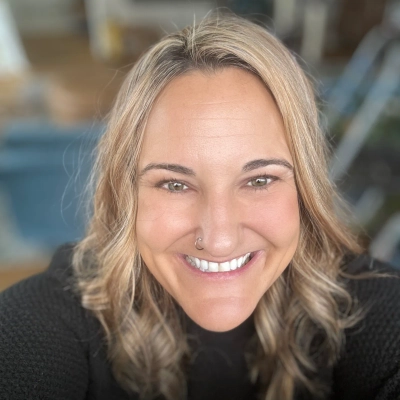 Maurina Venturelli
Maurina Venturelli
Head of Gtm, OpStart
Organize Quarterly Recharge Retreats
I initiated Recharge Retreats, a quarterly offsite team-building event designed to prevent group burnout and strengthen team dynamics. One event was a retreat at a beach resort for the drivers, dispatchers, and office staff of Angel City Limo, featuring low-pressure activities such as a coastal walk, team storytelling, and a family-style barbecue lunch — intentionally excluding work-related activities.
The retreat was associated with a 20% decrease in reported burnout symptoms, including fatigue and disengagement, along with a 15% increase in productivity among those who got more sleep, resulting in faster response times to customer inquiries. This led to a 25% reduction in scheduling conflicts, with employees from various departments collaborating more effectively with improved understanding and communication.
My recommendation is to organize team-wide, non-work-focused retreats every quarter to which all team members are invited, designed to facilitate relaxation and collaboration. By prioritizing team well-being, Angel City Limo has boosted morale, strengthened team relationships, and built a more resilient team – demonstrating that dedicated time off can make a significant difference in preventing burnout and increasing productivity within the luxury ground transportation industry.
 Arsen Misakyan
Arsen Misakyan
CEO and Founder, Angel City Limo
Volunteer at Animal Sanctuaries Together
As the founder of Befriend Cows, a company focused on human-animal relationships and corporate wellbeing, I’ve seen how profound experiences can prevent burnout. Our most effective team-building activity involves taking teams to volunteer at animal sanctuaries, specifically those housing rescued cows.
This direct engagement with animals offers an evidence-based practice for lowering stress, fostering empathy, and cultivating compassionate teams. The shared, hands-on tasks, like feeding or grooming rescued animals, create unique bonds and a collective sense of purpose beyond daily work pressures.
We’ve observed a significant uplift in team morale and an amplification of workplace productivity, as employees return with renewed focus and connection. This approach moves teams from simply collaborating to genuinely caring for a shared, meaningful mission, fostering altruistic behavior.
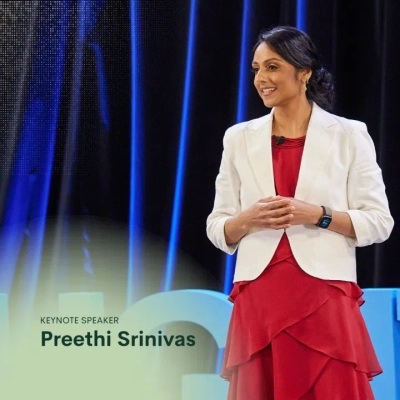 Preethi Sirinicas
Preethi Sirinicas
Founder, Befriend Cows

